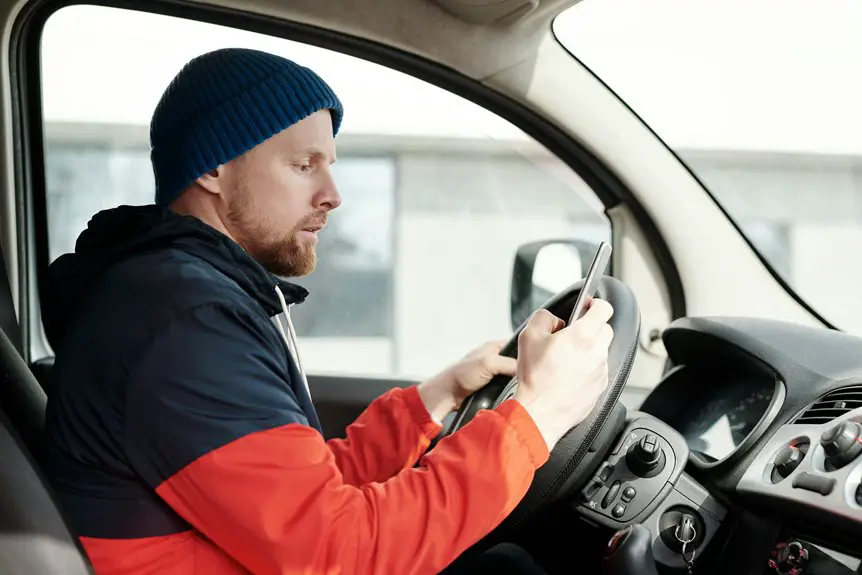To troubleshoot webcam driver issues in Windows, start by checking your webcam connection and ensuring it's securely plugged in. Update your drivers through Device Manager, or roll back to a previous version if problems persist. Use Windows Troubleshooter to identify and fix issues automatically, and adjust your privacy settings to allow apps access to the camera. If you still face issues, there are more steps to explore that can help you get your webcam working again.
Table of Contents
Key Takeaways
- Check and secure the webcam connection, ensuring it's plugged in and not obstructed by tape or stickers.
- Update webcam drivers via Device Manager or the manufacturer's website to ensure optimal performance.
- If issues arise after a driver update, use the "Roll Back Driver" option in Device Manager to revert to a previous version.
- Utilize the Windows Troubleshooter by navigating to "Hardware and Devices" to automatically identify and fix webcam-related problems.
- Adjust privacy settings to enable camera access for applications and test functionality with the Camera app.
Check Your Webcam Connection
Before diving into complex solutions, it's essential to check your webcam connection. Start by ensuring your webcam's plugged in securely, whether it's built-in or external. If it's an external webcam, try unplugging it and plugging it back in.
Next, inspect the USB port; sometimes, switching to a different port can resolve connectivity issues. If you're using a laptop, make sure the webcam's not disabled in the settings. Look for a physical switch or function key that might turn it off.
Also, check for any obstructions like tape or stickers covering the lens. Lastly, restart your computer to refresh the connection. Taking these simple steps can often solve the problem quickly, saving you time and frustration.
Update Webcam Drivers
Updating your webcam drivers is crucial for ensuring optimal performance. Outdated drivers can lead to issues like poor video quality, freezing, or complete failure to function.
To update your drivers, start by opening the Device Manager. Locate the "Imaging devices" section, find your webcam, and right-click on it. Select "Update driver" from the menu.
You'll then have the option to search automatically for updated driver software. If Windows finds a new version, it'll install it for you. Otherwise, you might want to visit the manufacturer's website for the latest drivers specific to your webcam model.
After updating, restart your computer to apply the changes, and test your webcam to see if the problems are resolved.
Roll Back to Previous Driver Version
Sometimes, after updating your webcam drivers, you might encounter new issues that didn't exist before. If that's the case, rolling back to the previous driver version can often resolve these problems.
To do this, open Device Manager by right-clicking the Start button and selecting it from the menu. Find your webcam under "Imaging devices," right-click it, and select "Properties."
In the Properties window, click on the "Driver" tab, and if the option is available, click "Roll Back Driver." Follow the prompts to complete the process.
Once done, restart your computer to ensure the changes take effect. This should restore your webcam to its previous state, hopefully eliminating the issues caused by the latest update.
Use Windows Troubleshooter
When you're facing webcam driver issues, using the Windows Troubleshooter can be a quick fix.
You'll start by accessing the tool, then run it to identify any problems.
Once it's done, interpreting the results will help you understand the next steps to take.
Accessing Windows Troubleshooter
If you're experiencing issues with your webcam, accessing Windows Troubleshooter can be a quick way to identify and resolve the problem.
To get started, click on the Start menu and type "Troubleshoot settings" in the search bar. Select the "Troubleshoot settings" option that appears.
Once you're in the Troubleshoot menu, look for "Additional troubleshooters" or "Other troubleshooters," depending on your Windows version. Click on that to access a list of available troubleshooters.
You'll find options specifically for hardware and devices, which can help address webcam issues. By following these steps, you can quickly reach the Troubleshooter and get ready to tackle any problems your webcam may be facing.
Running the Troubleshooter
To effectively diagnose your webcam issues, running the Windows Troubleshooter is a straightforward solution.
Start by pressing the Windows key and typing "Troubleshoot settings," then hit Enter. In the Troubleshoot menu, select "Additional troubleshooters," and find "Hardware and Devices."
Click on it, then select "Run the troubleshooter." Windows will automatically scan for problems related to your webcam and attempt to fix any detected issues.
Follow the prompts carefully, and let it run its course. Once completed, check if your webcam is functioning properly.
If not, you may need to explore other options, but this step often resolves common driver-related problems efficiently.
Don't skip this essential troubleshooting step!
Interpreting Troubleshooting Results
After running the Windows Troubleshooter, you'll receive results that can guide your next steps.
Understanding these results is crucial for resolving your webcam driver issues effectively. Here's how to interpret what you see:
- Detected Problems: If the troubleshooter identifies an issue, follow its recommendations to fix it.
- No Issues Found: If it claims everything's fine, consider checking for updates or reinstalling the driver manually.
- Additional Information: Take note of any error codes; they can help you search for specific solutions online.
- Follow-Up Actions: The troubleshooter may suggest further steps or links to resources—make sure to explore those for more help.
Adjust Privacy Settings
While you may have installed the latest webcam drivers, privacy settings on your device can still prevent your camera from working properly. To check and adjust these settings, follow these steps. First, navigate to the Privacy settings in your Windows settings. Then, locate the Camera section. Ensure that access to the camera is enabled for your device and apps.
Here's a quick guide to help you:
| Action | Location | Result |
|---|---|---|
| Enable Camera | Settings > Privacy | Allows camera access |
| Grant App Access | Settings > Privacy | Apps can use camera |
| Disable Block | Settings > Privacy | Prevents access blocking |
| Test Functionality | Open Camera App | Confirms camera works |
Adjusting these settings can often resolve webcam issues.
Reinstall Webcam Drivers
If you're still experiencing issues with your webcam, reinstalling the drivers can often resolve the problem.
Here's how to do it:
- Open Device Manager: Right-click the Start button and choose Device Manager.
- Locate Your Webcam: Find "Imaging devices" and expand the menu to see your webcam.
- Uninstall the Driver: Right-click your webcam, select "Uninstall device," and confirm.
- Reboot Your Computer: Restart your PC, and Windows will automatically reinstall the driver.
After following these steps, check if your webcam works properly.
If it doesn't, you might need to download the latest drivers from the manufacturer's website.
Reinstalling drivers can fix glitches and ensure your webcam's performance is at its best!
Frequently Asked Questions
How Can I Determine if My Webcam Is Functioning Properly?
You can check if your webcam's functioning by launching a video conferencing app or camera software. If you see yourself on-screen, it's working properly. If not, you may need to investigate further.
What Should I Do if My Webcam Is Not Detected?
If your webcam's not detected, check the connections and ensure it's powered on. Restart your computer, try a different USB port, and update the drivers. If issues persist, consult the device manufacturer's support site for guidance.
Are There Specific Windows Updates That Affect Webcam Performance?
Yes, certain Windows updates can impact webcam performance. If you're experiencing issues, check for recent updates and consider rolling them back. Keeping your drivers updated also helps ensure optimal functionality for your webcam.
Can Antivirus Software Interfere With My Webcam Drivers?
Yes, antivirus software can interfere with your webcam drivers. It might block access or mistakenly identify them as threats. You should check your antivirus settings and ensure your webcam's allowed to function properly.
How Do I Check for Hardware Issues With My Webcam?
To check for hardware issues with your webcam, inspect the connections, ensure it's powered on, and test it on another device. If it still doesn't work, consider replacing it or seeking professional help.




